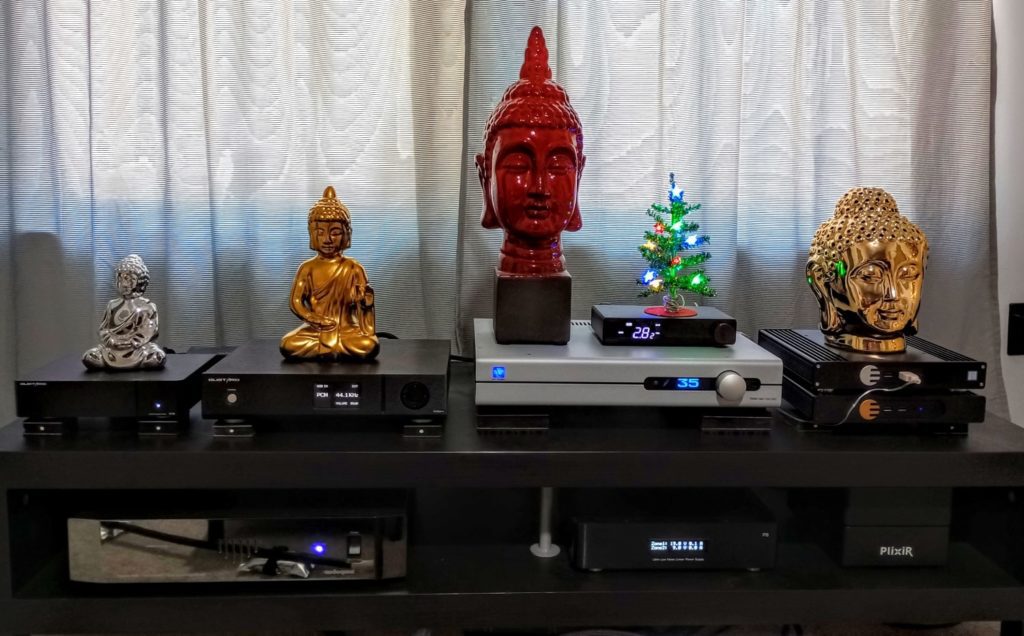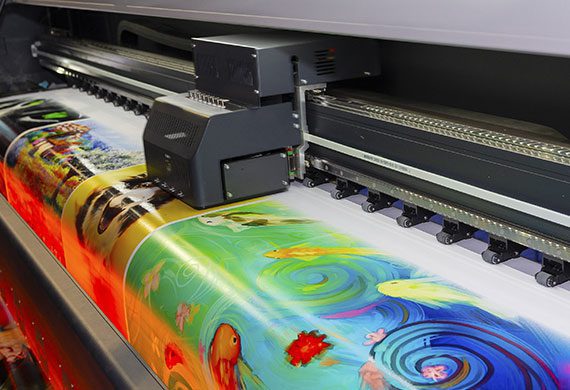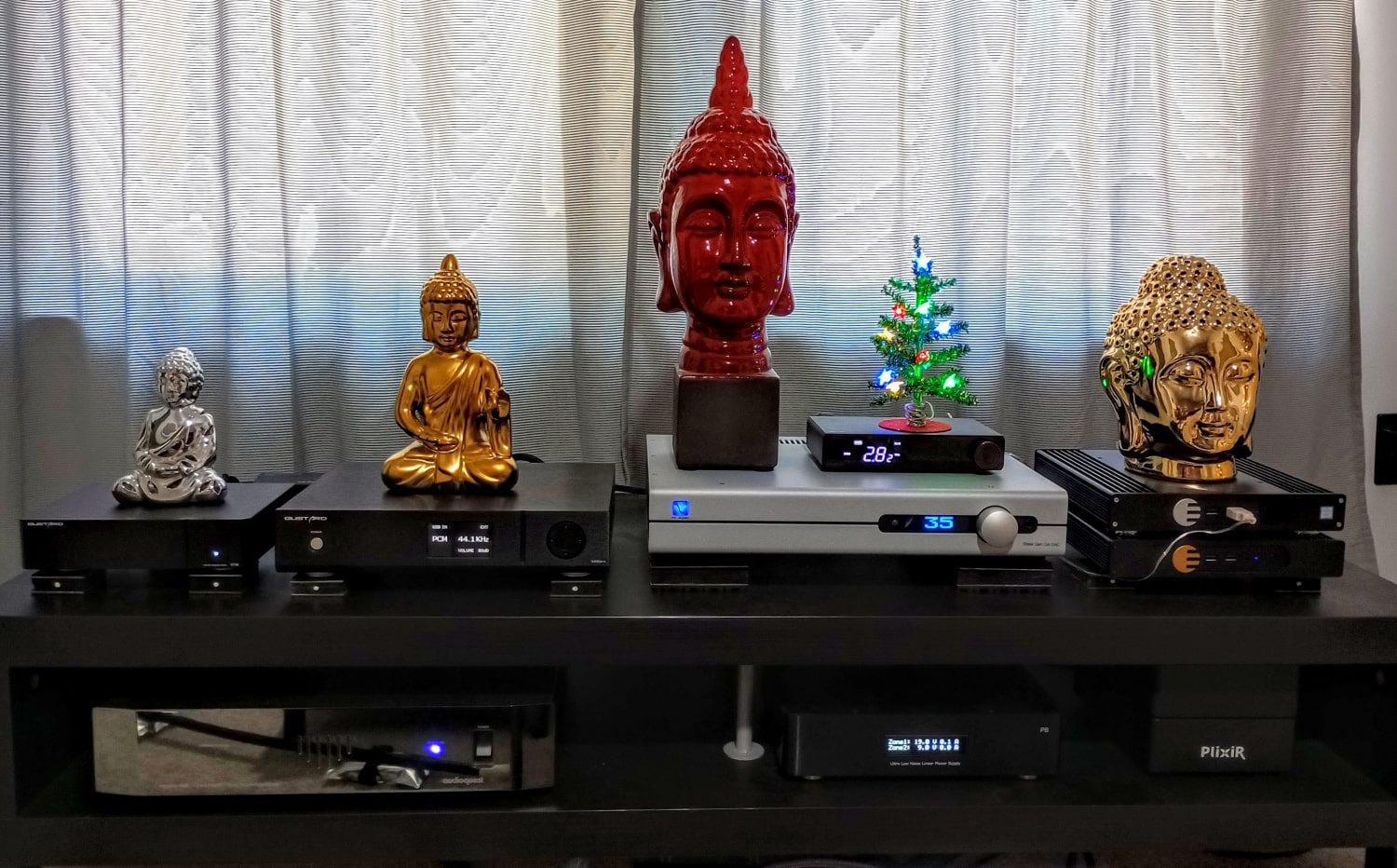
I belong to several Facebook audio-related groups, including Streaming Music Matters, which is administered by Qobuz’s David Solomon. While the undeniable focus of the group is music-streaming via Qobuz, there are also many lively and intense tech-centred discussions covering all aspects of streaming and its associated equipment. Many of those discussions feature members from the Facebook Roon groups, for example, and those discussions generally shake down as disagreements between two principal factions in digital music playback. Those factions include the “ones and zeros” camp (we’ll call them objectivists), and the “I can definitely hear a difference” contingent (we’ll call them subjectivists). I happen to belong to the latter group, and I’ve been participating in an ongoing Facebook discussion thread that’s been running for well over a month now.
The original post was made in response to a review of the Hegel Viking CD player authored by the venerable Herb Reichert that appeared in a recent issue of Stereophile, where Herb stated that the Hegel player smoked the performance offered by the same file streamed across a network through his streaming setup. Herb then mused at length about digital’s possible role in the discrepancy of what he was hearing between disc playback and streaming. All hell broke loose from the objectivists, who claimed there couldn’t possibly be differences between the sound coming from the disc player and that of the streamed file, because bits are bits, it’s all digital, and it’s impossible to hear differences between bit-perfect digital sources. Anything Herb was hearing, they claimed, wasn’t due to any digital elements, but psychological. Here’s one of the opening statements on Facebook from the original poster: “The notion that streaming is somehow musically different from a transport or CD player is ludicrous.”

The discussion raged on for weeks, then, after having been silent for a week, the thread again (and quite unexpectedly!) reared its ugly head. “Ugly” is perhaps a grossly understated descriptor. Accelerating the intensity of the discussion to DEFCON 5 seemed to loom in the minds of many participants. Here’s an objectivist’s comment in an instant message to me after the thread resumed: “[expletive deleted] I can’t [expletive deleted] believe we’re actually going down this [expletive deleted] road again!” You get the picture: plenty of decorum and détente from everyone involved.
The gist of it goes like this: the objectivist side argues that there can’t possibly be any differences in sound produced by digital equipment and accessories. It’s all digital, which by its essence is all ones and zeros, and nothing—whether it’s equipment or cables involved in the digital playback path—could possibly alter the sound of the digital source signal, because it’s all just ones and zeros. Period. That viewpoint is rather starkly opposed by everyone else who believes they can hear differences in music playback from inserting different digital cables and/or ancillary equipment. Part of the ongoing argument that always manages to get infused into the discussion between the two groups is where the subjectivists accuse the objectivists of making statements about sound quality based strictly on theory, and that they’ve never actually listened to any of the equipment or music under discussion. It’s basically computer techs versus music lovers: you know, the geeks versus the freaks.
An Analogy from My Past
I worked for decades in the commercial art segment of advertising and large-scale commercial printing. For generations, preparation of commercial art was a mechanical, hands-on, entirely analogue process. Every part of it, from preparation of artwork to creation of the negative film and burning of metal printing plates, was done by hand, requiring several workers to facilitate the proceedings. When 40 years ago commercial art creation and production began to become computerized and entirely digital, things changed rather drastically. And there was a huge disconnect between the designers and art directors who created the artwork and the printing technicians who prepared it for the printing process.
Early on, the conventional wisdom in commercial print held that the new computerized processes needed to have “computer” people operating the new equipment. The problem ended up being that the computer people hired to perform the jobs had no understanding of the print process and couldn’t generate film or metal plates that could satisfy the design goals of the art directors and advertisers. This engendered a decade-long learning curve that was finally resolved by retraining traditional print employees as computer operators—which gave them a unique perspective on the mechanical (analogue) processes involved versus the computerized (digital) processes. Many of those employees were journeyman craftsmen, and most of those who, out of principle, rejected the offer to be retrained as computer operators eventually found themselves unemployed. Fortunately, I accepted the offer and, as a result, became fairly computer savvy—a decision that altered and informed my existence from that point in the 1990’s to the present. Prior to that, I’d rarely been near a computer, but my ability to bring a lifelong analogue perspective to an emerging digital technology proved invaluable.

Analogue and digital are inseparably entwined throughout many aspects of life, and that concept has informed my appreciation of digital music playback—which I increasingly enjoy through an expanding array of digital source equipment. And I want to make one thing perfectly clear; I’m not naysaying anyone’s viewpoint on the subject. I just happen to believe that the whole ones and zeros argument is an oversimplification of the digital streaming process and the issues at hand. There are too many other variables to consider, and, of course, DACs contain both analogue and digital circuitry, hence the name Digital to Analogue Converter. When the objectivists say bits are bits, it’s generally always worded in such a way to mean that the digital part of the overall equation is beyond doubt the most important element of digital to analogue conversion. And most manufacturers don’t always exercise a complete degree of transparency about how their DACs process digital files, or, ultimately, the digital to analogue conversion. There’s plenty of room for conjecture in this area.
Here’s another quote from the recent follow-up on the Facebook thread mentioned earlier: “Actually bits are just bits. There’s no “bit” that has the musicality quality; no bit that has the dynamic range attribute; no bit that has warmth or analytical qualities. All bits, ripped or streamed, are exactly the same…” This is just the tip of the digital iceberg, and I’ll continue with my thoughts on this subject in another installment in the near future. Until then, Happy Holidays, and good listening!










Leave a Reply